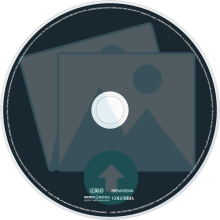Cover NOT yet available in
Join Patreon for 4K upload/download access
Your Rating (Click a star below)
![]()
![]()
![]()
![]()
![]()
![]()
![]()
![]()
![]()
![]()
Track List
01) O Fortuna (chorus)
02) Fortuna plango vulnera
03) Veris leta facies
04) Omnia sol temperat
05) Ecce gratum
06) Tanz
07) Floret silva
08) Chramer, gib die varwe mir
09) Reie
10) Were diu werlt alle min
11) Estuans interius
12) Olim lacus colueram
13) Ego sum abbas
14) In taberna quando sumus
15) Amor volat undique
16) Dies, nox et omnia
17) Stetit puella
18) Circa mea pectora
19) Si puer cum puellula
20) Veni, veni, venias
21) In trutina
22) Tempus est iocundum
23) Ducissime
24) Ave formosissima
25) Fortuna Imperatrix Mundi
01) O Fortuna (chorus)
02) Fortuna plango vulnera
03) Veris leta facies
04) Omnia sol temperat
05) Ecce gratum
06) Tanz
07) Floret silva
08) Chramer, gib die varwe mir
09) Reie
10) Were diu werlt alle min
11) Estuans interius
12) Olim lacus colueram
13) Ego sum abbas
14) In taberna quando sumus
15) Amor volat undique
16) Dies, nox et omnia
17) Stetit puella
18) Circa mea pectora
19) Si puer cum puellula
20) Veni, veni, venias
21) In trutina
22) Tempus est iocundum
23) Ducissime
24) Ave formosissima
25) Fortuna Imperatrix Mundi
2:25
2:39
3:03
2:14
2:34
1:44
3:16
3:27
3:50
0:53
2:20
3:30
1:46
3:17
3:11
2:38
2:11
2:00
1:12
0:59
2:01
2:15
0:43
1:29
2:27
Data Complete
 40%
40%
Total Rating
 40%
40%Total Rating
![]() (0 users)
(0 users)
Back Cover![]()
CD Art
3D Case
3D Thumb
3D Flat
3D Face
3D Spine
First Released
![]() 1984
1984
![]() Classical
Classical
![]() ---
---
![]() ---
---
![]() ---
---
![]() Medium
Medium
![]() Album
Album
![]() 0 copies
0 copies
Album Description
Available in:

Carmina Burana is a scenic cantata composed by Carl Orff in 1935 and 1936, based on 24 poems from the medieval collection Carmina Burana. Its full Latin title is Carmina Burana: Cantiones profanæ cantoribus et choris cantandæ comitantibus instrumentis atque imaginibus magicis (Songs of Beuern: Secular songs for singers and choruses to be sung together with instruments and magic images). Carmina Burana is part of Trionfi, a musical triptych that also includes Catulli Carmina and Trionfo di Afrodite. The first and last movements of the piece are called "Fortuna Imperatrix Mundi" (Fortune, Empress of the World) and start with the very well known "O Fortuna".
In 1934, Orff encountered the text in the 1847 edition of the Carmina Burana by Johann Andreas Schmeller, the original text dating mostly from the 11th or 12th century, including some from the 13th century. Michel Hofmann (de), then a young law student and Latin and Greek enthusiast, assisted Orff in the selection and organization of 24 of these poems into a libretto, mostly in Latin verse, with a small amount of Middle High German and Old Provençal. The selection covers a wide range of topics, as familiar in the 13th century as they are in the 21st century: the fickleness of fortune and wealth, the ephemeral nature of life, the joy of the return of Spring, and the pleasures and perils of drinking, gluttony, gambling and lust.
Carmina Burana was first staged in Frankfurt by the Frankfurt Opera on 8 June 1937 under conductor Bertil Wetzelsberger (1892–1967) with the Cäcilien-Chor Frankfurt (de), staging by Oskar Wälterlin (de) and sets and costumes by Ludwig Sievert. Shortly after the greatly successful premiere, Orff said the following to his publisher, Schott Music:
"Everything I have written to date, and which you have, unfortunately, printed, can be destroyed. With Carmina Burana, my collected works begin."
Several performances were repeated elsewhere in Germany. The Nazi regime was at first nervous about the erotic tone of some of the poems, but eventually embraced the piece. It became the most famous piece of music composed in Germany at the time. The popularity of the work continued to rise after the war, and by the 1960s Carmina Burana was well established as part of the international classic repertoire.
Set design by Helmut Jürgens for a performance in Munich in 1959
Alex Ross wrote that "the music itself commits no sins simply by being and remaining popular. That Carmina Burana has appeared in hundreds of films and television commercials is proof that it contains no diabolical message, indeed that it contains no message whatsoever."
The desire Orff expressed to his publisher has by and large been fulfilled: No other composition of his approaches its renown, as evidenced in both pop culture's appropriation of "O Fortuna" and the classical world's persistent programming and recording of the work. In the United States, Carmina Burana represents one of the few box office certainties in 20th-century repertoire.
This version of the "Carmina Burana" is live performed at KNU in Belgrad on April 17th, 1984 by the Belgrade Philharmonic Orchestra (Beogradska Filharmonija). The orchestra was then conducted by Darinka Matić-Marović.

User Album Review
None...
External Album Reviews
None...
User Comments


Available in:
Carmina Burana is a scenic cantata composed by Carl Orff in 1935 and 1936, based on 24 poems from the medieval collection Carmina Burana. Its full Latin title is Carmina Burana: Cantiones profanæ cantoribus et choris cantandæ comitantibus instrumentis atque imaginibus magicis (Songs of Beuern: Secular songs for singers and choruses to be sung together with instruments and magic images). Carmina Burana is part of Trionfi, a musical triptych that also includes Catulli Carmina and Trionfo di Afrodite. The first and last movements of the piece are called "Fortuna Imperatrix Mundi" (Fortune, Empress of the World) and start with the very well known "O Fortuna".
In 1934, Orff encountered the text in the 1847 edition of the Carmina Burana by Johann Andreas Schmeller, the original text dating mostly from the 11th or 12th century, including some from the 13th century. Michel Hofmann (de), then a young law student and Latin and Greek enthusiast, assisted Orff in the selection and organization of 24 of these poems into a libretto, mostly in Latin verse, with a small amount of Middle High German and Old Provençal. The selection covers a wide range of topics, as familiar in the 13th century as they are in the 21st century: the fickleness of fortune and wealth, the ephemeral nature of life, the joy of the return of Spring, and the pleasures and perils of drinking, gluttony, gambling and lust.
Carmina Burana was first staged in Frankfurt by the Frankfurt Opera on 8 June 1937 under conductor Bertil Wetzelsberger (1892–1967) with the Cäcilien-Chor Frankfurt (de), staging by Oskar Wälterlin (de) and sets and costumes by Ludwig Sievert. Shortly after the greatly successful premiere, Orff said the following to his publisher, Schott Music:
"Everything I have written to date, and which you have, unfortunately, printed, can be destroyed. With Carmina Burana, my collected works begin."
Several performances were repeated elsewhere in Germany. The Nazi regime was at first nervous about the erotic tone of some of the poems, but eventually embraced the piece. It became the most famous piece of music composed in Germany at the time. The popularity of the work continued to rise after the war, and by the 1960s Carmina Burana was well established as part of the international classic repertoire.
Set design by Helmut Jürgens for a performance in Munich in 1959
Alex Ross wrote that "the music itself commits no sins simply by being and remaining popular. That Carmina Burana has appeared in hundreds of films and television commercials is proof that it contains no diabolical message, indeed that it contains no message whatsoever."
The desire Orff expressed to his publisher has by and large been fulfilled: No other composition of his approaches its renown, as evidenced in both pop culture's appropriation of "O Fortuna" and the classical world's persistent programming and recording of the work. In the United States, Carmina Burana represents one of the few box office certainties in 20th-century repertoire.
This version of the "Carmina Burana" is live performed at KNU in Belgrad on April 17th, 1984 by the Belgrade Philharmonic Orchestra (Beogradska Filharmonija). The orchestra was then conducted by Darinka Matić-Marović.
User Album Review
None...
External Album Reviews
None...
User Comments

No comments yet...
